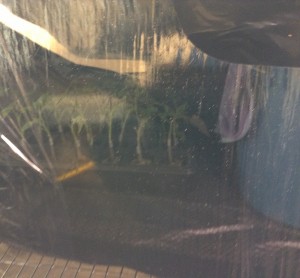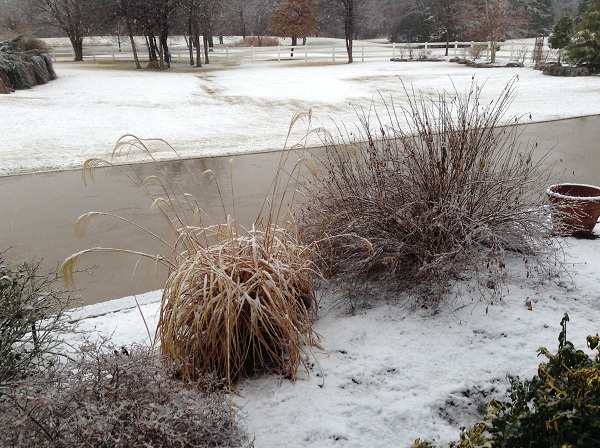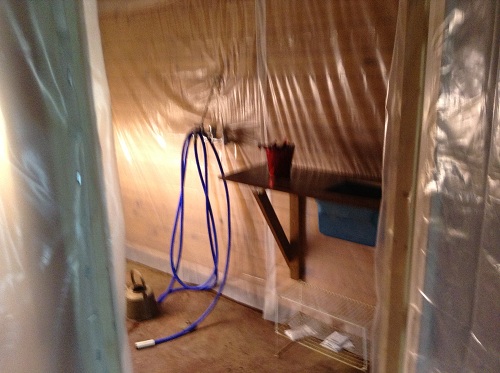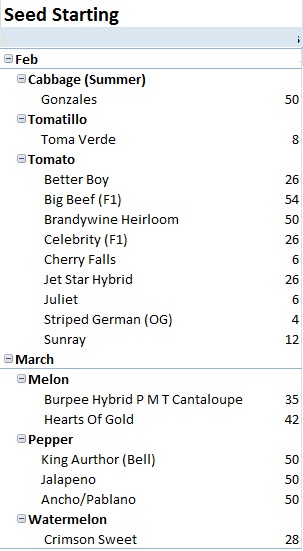Oh boy have I been wrong about the weather. Blog after blog, I’ve forecast an early spring. We planted tomatoes, now dead in the garden, in late March. The weather has made a fool of me. Even cold tolerant cabbage froze when the temp reached 20 F and was replanted.
Oh and the drought I’ve planned for is another surprise. Most of late winter the garden needed water to even work the soil. There had been no heavy rain since leveling and tilling the garden in August. But now we have had several very nice days of rain. Last week we had 5 inches slow soaking rain. Every 10 day forecast seems to show a couple days of rain. The garden is often too wet to work. My over-engineered irrigation system makes me feel a bit foolish too.
We are keeping all of the seedlings of tomato and tomatillo outside during the day and return them to the hot house over night. Both are getting too big for the pots they are planted. Ugh – the grafted tomatoes look completely root-bound and are falling over. They needed to be planted 2 weeks ago, but must wait until this late frost passes.
I don’t know why confessing foolishness is important. A good confession cleans the soul. But even a public confession will probably not correct my behavior. It is just too much fun to try to predict how the world will unfold. Maybe I should post a warning to blog readers or waive liability of any and all utterances made or implied on this site.



















